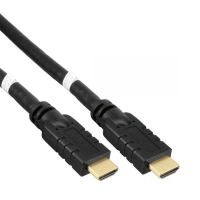Nothing in the basket.

- Search
-
Login
-
0
ComparisonAdd products to compare, then they will appear here and you can compare parameters.
-
0
0 €
TVLogic LUM-313G 31.1" True 4K Monitor
SKU: TVL-LUM-313G
This product is no longer offered. Please select from the alternatives below.
Top accessories for TVLogic LUM-313G 31.1" True 4K Monitor
Product description
The LUM-313G is a 31.1" native 4K resolution(4096×2160) monitor with maximum luminance of 350nit, contrast ratio of 1500:1, wide color gamut and wide viewing angle. Equipped with 4 BNCs (2×12G-SDI + 2×3G-SDI) and HDMI 2.0 interface, it supports various video formats up to 4K/60p through single-link 12G-SDI, Quad 3G-SDI and HDMI 2.0. In addition to various professional features such as Waveform monitor and Vectorscope, the LUM-313G provides HDR emulation function with HDR EOTFs of PQ, HLG and SLog3. More camera-specific HDR logs and gamuts will be supported by firmware update.
Product description
A true HDR monitor must employ a special display panel with high dynamic range and a wide color gamut, along with being calibrated for PQ and HLG. For example, the LUM-310X (dual layer LCD system) and LUM-310R (LCD with local dimming backlight system) are capable of reproducing a peak luminance of 1,000 nit and 2,000 nit respectively, and a contrast ratio of 1,000,000 : 1; in addition, they cover 99% of the DCI color gamut.
Other monitor utilizing displays with normal luminace range from 0.1nit up to 400nit or high luminance monitor with up to 2000nit with variable black level (0.1 ~ 1.5nit) is defined as 'HDR Emulation monitor' in TVLogic although they have HDR EOTF and related functions. Below is a simple example for your reference.
Red and Green channels are not used and only Blue or Monochrome channel is used to display the screen. This function is used to adjust the color tones (tones and saturation) of the screen using the SMPTE Color Bar. For example, after displaying the Blue channel, adjust the Color (or Saturation) and Tint (or Hue) so that the original Magenta and Cyan are of the same brightness, and the original Gray and Blue are of the same brightness.
Displays various kinds of aspect ratios on the screen. Wide range of markers and security areas are available with line color and curtain transparency selection. A User Marker is available if any of standard markers fits your requirements.
Controls the size of the image. Overscan: Extra area around the four edges of the image that may not be seen reliably by the viewer. Underscan: Constrains the size of the image so the monitor shows everything the camera is seeing. 1:1 pixel: Displays the original image resolution without scaling to match a certain resolution or an aspect ratio.
Parameters
Parameters
| Manufacturer: | TVLogic |
| Category: | Studio Monitors |
Main parameters
| Size | 31" |
| Monitor inputs | SDI |
| Monitor inputs | 4K HDMI |
| Monitor inputs | 12G SDI |
| Monitor inputs | 6G-SDI |
| Panel resolution | 4096 X 2160 |
ACCESSORIES (9)
ACCESSORIES (9)
Canare L-4.5CHWS Flexible 4K UHD, 12G-SDI Cable, BNC-BNC 5m
Canare L-4.5CHWS flexible and durable 75 ohm 4,2 mm "Low Loss" koaxial SD/HD/3G/12G-SDI
30 €
In stock > 5 pcs
Canare L-4.5CHWS Flexible 4K UHD, 12G-SDI Cable, BNC-BNC 10m
Canare L-4.5CHWS flexible and durable 75 ohm 4,2 mm "Low Loss" koaxial SD/HD/3G/12G-SDI
49 €
In stock > 5 pcs
Canare L-4.5CHWS Flexible 4K UHD, 12G-SDI Cable, BNC-BNC 2m
Canare L-4.5CHWS flexible and durable 75 ohm 4,2 mm "Low Loss" koaxial SD/HD/3G/12G-SDI
18 €
In stock > 5 pcs
HDMI cable 2.0b UHD 4K High Speed + Ethernet 3,0m
Propojovací HDMI 2,0b kabel UHD 4K High Speed + Ethernet kabel
8.9 €
In stock 4 pcs
HDMI cable 2.0b UHD 4K High Speed + Ethernet 2,0m
Propojovací HDMI 2,0b kabel UHD 4K High Speed + Ethernet kabel
7.8 €
In stock 2 pcs
HDMI kabel 2.0 UHD 4K High Speed + Ethernet 20m
Propojovací HDMI 2,0 kabel UHD 4K High Speed + Ethernet kabel s integrovaným zes
55 €
To be sent 4 pcs
TVLogic V-Mount-17
This V-Mount Battery Plate from TVLogic enables you to power your compatible monitor
339 €
on request
- Show all

TVLogic LUM-313G 31.1" True 4K Monitor
The LUM-313G is a 31.1" native 4K resolution(4096×2160) monitor with maximum luminanceCall us for pricing information











